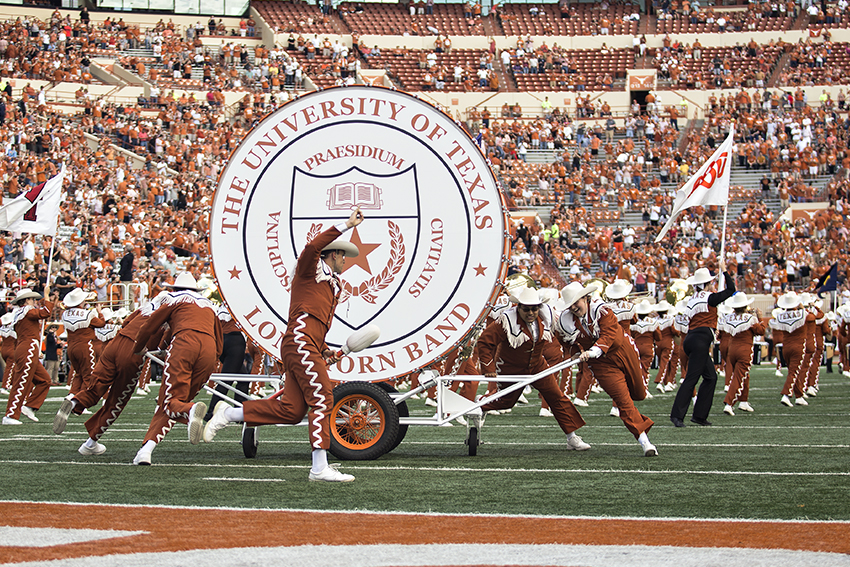Students who tuned into a recent showing of HQ Trivia, a mobile game show where viewers can participate in a trivia game using their smartphones, may have been surprised to find out that UT-Austin owns a drum that was once contaminated with radioactive energy.
One question asked participants to identify the university that currently owns a giant drum that used to be radioactive. Among the options was UT-Austin — an answer that only 17 percent of viewers chose correctly.
Big Bertha, dubbed the world’s largest drum at 8-feet-and-44-inches wide, has a rich, unique history. The drum, initially purchased by the University of Chicago in 1922, was kept in storage after the varsity football program was cut by the University in 1939.
Coincidentally, their football stadium was also a testing site for the Manhattan Project, a government-subsidized research undertaking that developed the world’s first nuclear bombs during World War II. As a result, the drum was exposed to heavy amounts of radioactive energy. However, using a Geiger counter, a device that measures radiation, the University of Chicago determined in 1946 that Big Bertha is safe and gives off little to no radiation.
The drum changed hands afterwards as Moton Crocket, former UT Longhorn Band director, purchased Big Bertha from the University of Chicago in 1954 for one dollar.
The drum is undoubtedly a cultural icon in addition to having a storied past, said current Longhorn Band director Scott Hanna. Big Bertha has appeared on TV shows such as “Shipping Wars” and in parades such as London’s New Year’s Day Parade.
“Big Bertha is one of the most recognizable images associated with the University of Texas and the Longhorn Band,” Hanna said. “The drum is a source of pride for UT alums and fans across the world.”
As for the rich history behind Big Bertha, he added that the drum’s backstory is not typical of large instruments. Besides the fact that the bass drum has a historical connection to the Manhattan Project, it is also unique in that manufacturers do not frequently build instruments of such a size, Hanna said.
“It is unusual for these instruments to change owners, and they are not regularly produced by drum manufacturers,” Hanna said.
Instruments of such dimensions are not sold in bulk or purchased from stores like the regular-sized drums used by the Longhorn Band. The University of Chicago commissioned the production of the instrument by C.G. Conn Instruments in 1922.
“There are very few drums of this size,” Hanna said. “Purdue University owns a drum that is essentially identical in size, and the University of Missouri also has a large bass drum known as Big Mo.”
Today, Big Bertha is located in the north end zone of the Darrell K. Royal Memorial Stadium. The drum, only four years away from celebrating its 100th birthday, is managed by the Bertha Crew. The drum performs at every home football game during halftime and after Longhorn touchdowns.
“Big Bertha is a part of the Longhorn Band pre-game and halftime shows at every home game,” Hanna said. “Bertha is on permanent display in the North End Zone Concourse of Darrell K Royal-Texas Memorial Stadium, where fans can view the drum and read about its history.”
Finance sophomore Alex Engel said he was amazed when he learned about Big Bertha’s background. He added that the bass drum is just one of the many cultural icons of UT-Austin that should be treasured.
“I noticed just how massive this drum was as football games, but never knew the history behind it,” Engel said. “Learning about its past and just how old it is makes you appreciate it even more.”















